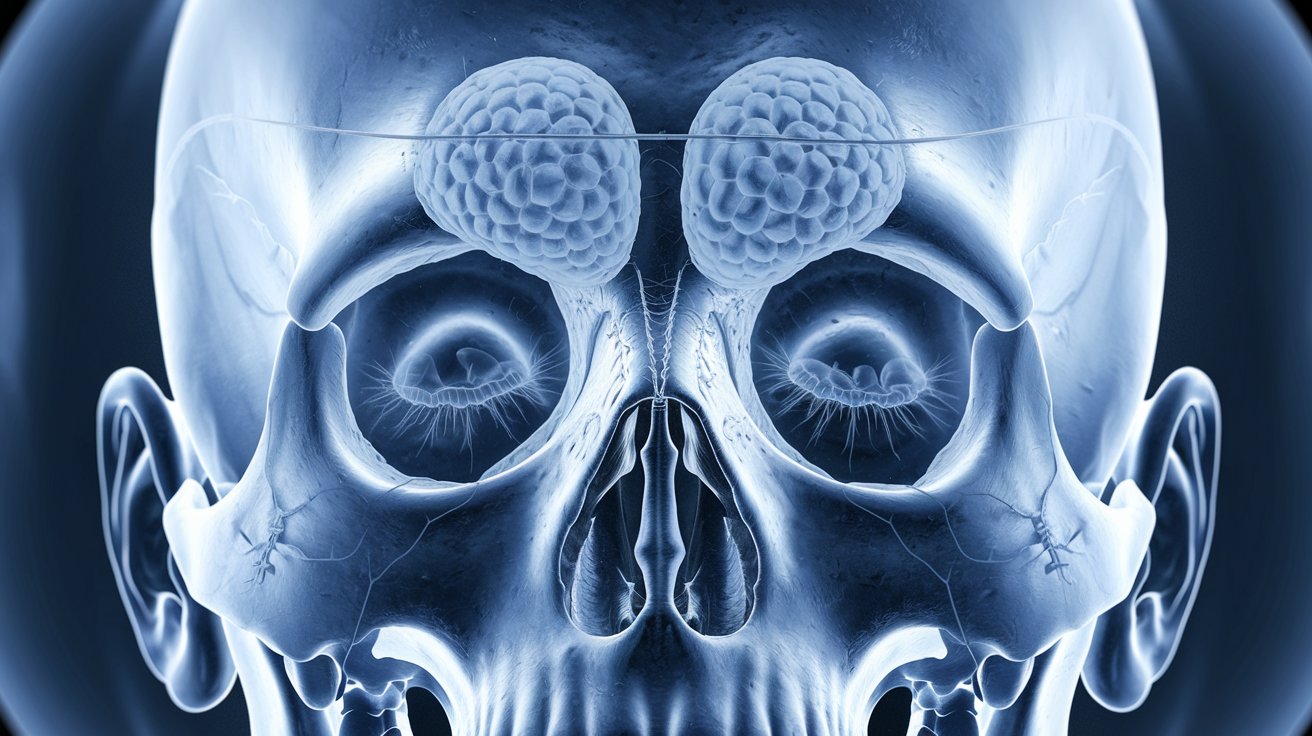
Pneumosinus Dilatans is a rare condition that can puzzle even seasoned doctors. What is Pneumosinus Dilatans? It’s an abnormal expansion of the paranasal sinuses without any bone erosion. This condition often goes unnoticed because it usually doesn’t cause symptoms. However, when symptoms do appear, they can include headaches, facial pain, or even changes in vision. Understanding this condition is crucial for proper diagnosis and treatment. In this blog post, we’ll dive into 30 intriguing facts about Pneumosinus Dilatans, shedding light on its causes, symptoms, and treatment options. Whether you're a medical student, a curious reader, or someone affected by this condition, you'll find valuable information here.
Key Takeaways:
- Pneumosinus dilatans is a rare condition causing abnormal sinus expansion, leading to headaches, facial pain, and potential vision problems. Diagnosis involves imaging, and treatment options range from pain management to surgical intervention.
- Early diagnosis and appropriate management are crucial for individuals with pneumosinus dilatans to prevent complications and improve outcomes. With proper treatment, many can lead normal, healthy lives despite the condition's challenges.
What is Pneumosinus Dilatans?
Pneumosinus dilatans is a rare condition involving the abnormal expansion of the paranasal sinuses. This condition can lead to various symptoms and complications, making it important to understand its characteristics.
- Pneumosinus dilatans primarily affects the frontal sinuses, although other sinuses can also be involved.
- The condition is characterized by an abnormal increase in the size of the sinus cavities without any signs of infection or inflammation.
- It is often discovered incidentally during imaging studies for other medical issues.
- The exact cause of pneumosinus dilatans remains unknown, but several theories have been proposed.
- Some researchers believe that hormonal imbalances may play a role in the development of this condition.
- Others suggest that genetic factors could contribute to the abnormal sinus expansion.
- Trauma to the facial bones or previous sinus surgery might also be potential causes.
- Symptoms can vary widely, with some individuals experiencing no symptoms at all.
- Common symptoms include headaches, facial pain, and a feeling of pressure in the affected area.
- In severe cases, pneumosinus dilatans can lead to vision problems due to pressure on the optic nerve.
Diagnosis and Imaging
Diagnosing pneumosinus dilatans often involves imaging studies to assess the extent of sinus expansion and rule out other conditions.
- Computed tomography (CT) scans are the most commonly used imaging technique for diagnosing pneumosinus dilatans.
- Magnetic resonance imaging (MRI) can also be helpful in evaluating the condition, especially if there are concerns about soft tissue involvement.
- X-rays are less commonly used but can still provide valuable information about the size and shape of the sinuses.
- Radiologists look for characteristic signs such as enlarged sinus cavities with thin, intact bony walls.
- Differential diagnosis is important to distinguish pneumosinus dilatans from other conditions like sinusitis or sinus tumors.
- A thorough medical history and physical examination are essential components of the diagnostic process.
Treatment Options
Treatment for pneumosinus dilatans depends on the severity of symptoms and the underlying cause, if known.
- In many cases, no treatment is necessary if the condition is asymptomatic and not causing any complications.
- For individuals experiencing significant symptoms, pain management strategies such as over-the-counter pain relievers may be recommended.
- In some cases, surgical intervention may be necessary to relieve pressure and improve symptoms.
- Functional endoscopic sinus surgery (FESS) is a minimally invasive procedure that can help reduce sinus pressure and improve drainage.
- Balloon sinuplasty is another surgical option that involves dilating the sinus openings to improve airflow and drainage.
- Post-surgical care is important to ensure proper healing and prevent complications.
- Regular follow-up appointments with an otolaryngologist (ENT specialist) are essential for monitoring the condition.
Complications and Prognosis
Understanding the potential complications and long-term outlook for individuals with pneumosinus dilatans is crucial for managing the condition effectively.
- One of the most serious complications is the risk of vision loss due to pressure on the optic nerve.
- Chronic headaches and facial pain can significantly impact an individual's quality of life.
- In rare cases, pneumosinus dilatans can lead to the development of mucoceles, which are mucus-filled cysts that can cause further complications.
- Early diagnosis and appropriate management are key to preventing complications and improving outcomes.
- The prognosis for individuals with pneumosinus dilatans varies depending on the severity of symptoms and the presence of any complications.
- With proper treatment and management, many individuals can lead normal, healthy lives.
- Ongoing research is needed to better understand the causes and optimal treatment strategies for pneumosinus dilatans.
Final Thoughts on Pneumosinus Dilatans
Pneumosinus dilatans, though rare, offers a fascinating glimpse into the complexities of the human body. Understanding its symptoms, causes, and treatments can help those affected navigate this condition more effectively. From its peculiar presentation to the various diagnostic methods, this condition underscores the importance of specialized medical knowledge. While it might seem daunting, advancements in medical imaging and surgical techniques provide hope for better management and outcomes. Staying informed and seeking expert medical advice remain crucial steps for anyone dealing with this condition. By shedding light on these 30 facts, we aim to empower readers with valuable insights. Remember, knowledge is power, and staying curious about such rare conditions can lead to better health and well-being.
Frequently Asked Questions
Was this page helpful?
Our commitment to delivering trustworthy and engaging content is at the heart of what we do. Each fact on our site is contributed by real users like you, bringing a wealth of diverse insights and information. To ensure the highest standards of accuracy and reliability, our dedicated editors meticulously review each submission. This process guarantees that the facts we share are not only fascinating but also credible. Trust in our commitment to quality and authenticity as you explore and learn with us.
